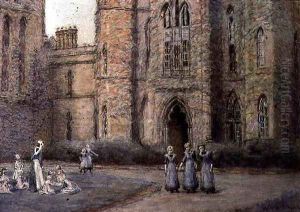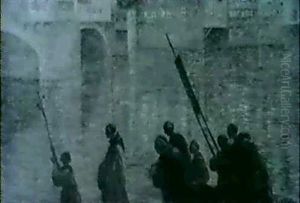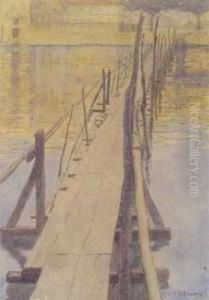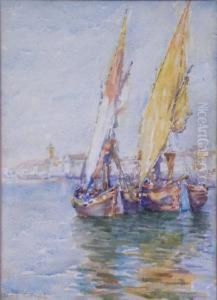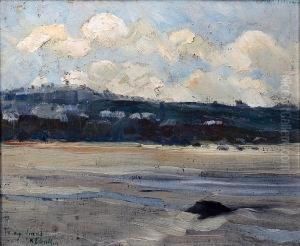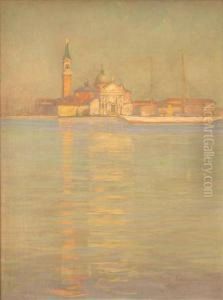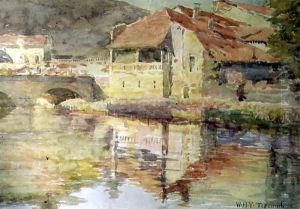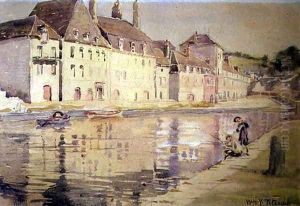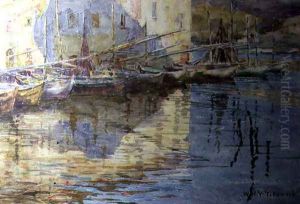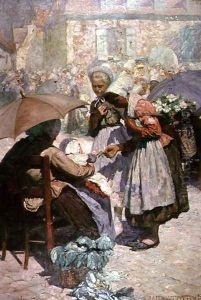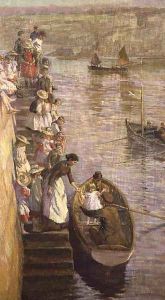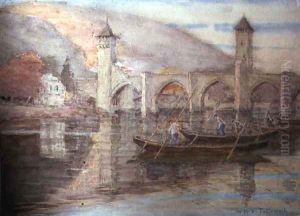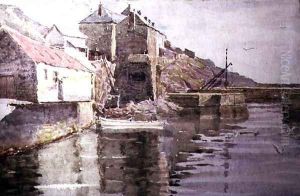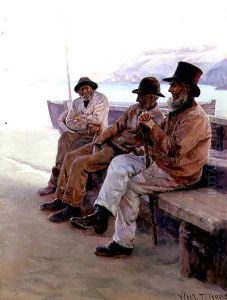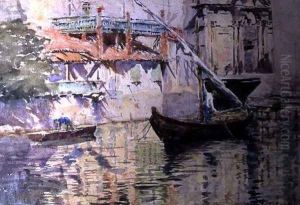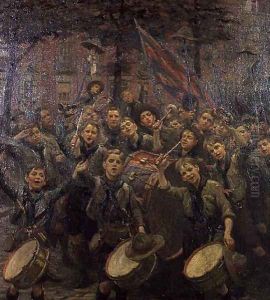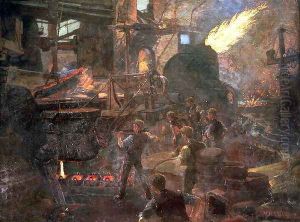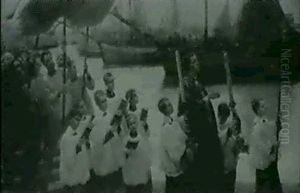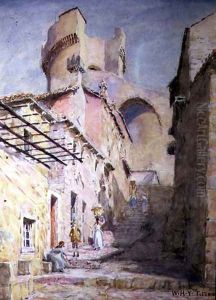William Holt Yates Titcomb Paintings
William Holt Yates Titcomb was an English artist known for his contribution to the Newlyn School and his later work in portraiture and religious subjects. Born on August 24, 1858, in Manchester, England, Titcomb developed an interest in art at a young age. He initially trained at the Bristol School of Art, where he honed his skills and developed a keen interest in painting. His early work was influenced by the burgeoning arts scene in Bristol, but it was his move to Cornwall that marked a significant turning point in his career.
In Cornwall, Titcomb became associated with the Newlyn School, a group of artists who sought to capture the everyday lives of the local fishing communities. During this period, he produced some of his most notable works, characterized by their detailed depiction of rural life, the effects of light on landscape and seascape, and a focus on the hardworking lives of the local people. His paintings from this era showcased his ability to convey the atmosphere and mood of a scene, earning him recognition and acclaim.
Despite his association with the Newlyn School, Titcomb's interests and style evolved over time. He traveled extensively, including visits to Italy and the Middle East, where he was inspired by the light and landscape, as well as the rich cultural heritage of these regions. These travels influenced his later work, which included religious subjects and portraiture. In his portraits, Titcomb was known for his ability to capture the character and essence of his subjects, a skill that won him commissions from notable figures of his time.
Throughout his career, Titcomb exhibited his work at prestigious venues, including the Royal Academy and the New Gallery in London. His contributions to the art world were recognized with his election to the Royal Institute of Painters in Water Colours and the Royal West of England Academy. Despite the changing trends in art during his lifetime, Titcomb remained dedicated to his craft, exploring different subjects and techniques until his death on March 5, 1930.
William Holt Yates Titcomb's legacy is that of an artist who successfully navigated the transition from the plein-air painting of the Newlyn School to the more introspective and personal subjects of his later years. His work continues to be celebrated for its diversity, technical skill, and the insight it provides into the changing landscapes and societies of his time.
